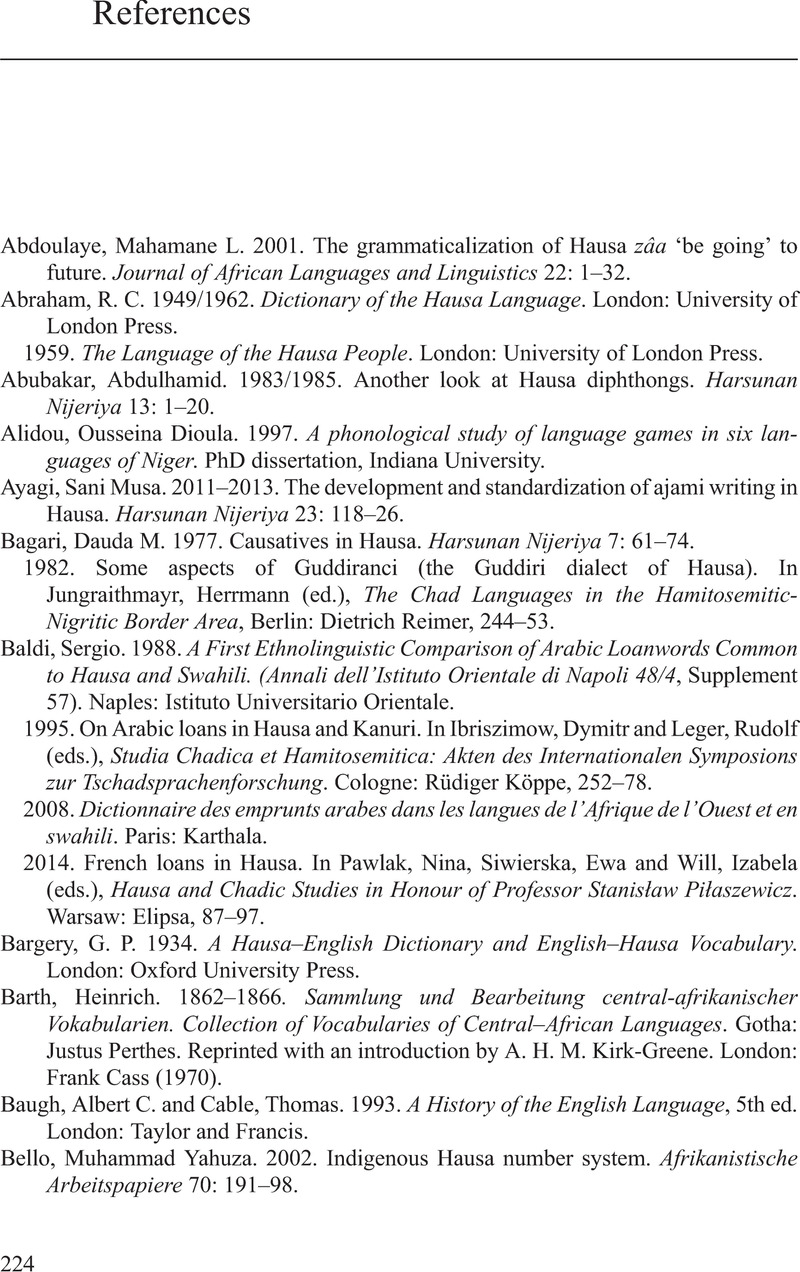References
Published online by Cambridge University Press: 24 March 2022
Summary

- Type
- Chapter
- Information
- A History of the Hausa LanguageReconstruction and Pathways to the Present, pp. 224 - 228Publisher: Cambridge University PressPrint publication year: 2022



